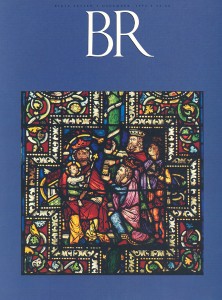Greek for Bible Readers
Adjectives of the first and second declensions
Adjectives constitute one of the most prominent classes of words in the New Testament. This lesson introduces the paradigms of first and second declension adjectives as well as the more characteristic features of the Greek use of the adjective.
An adjective is a word that describes a noun, as in “the good apostle,” or the gift is beautiful. A Greek adjective agrees with the noun that it modifies in gender, number and case. Most adjectives are called three-termination adjectives since they have inflections for masculine, feminine and neuter genders. A smaller number of two-termination adjectives have no separate forms for the feminine, but instead use the masculine forms for both masculine and feminine.
The great majority of New Testament adjectives (546, or 85 percent) are three-termination adjectives of the first and second declensions. In this pattern, the feminine forms of the adjective follow the first declension and the masculine and neuter forms follow the second declension.
The table below shows the declension of three different types of adjectives:
Singular | Plural | |||||
Masculine | Feminine | Neuter | Masculine | Feminine | Neuter |
Already a library member? Log in here.
Institution user? Log in with your IP address.

